Class E
Permission is not required. (With one MAJOR exception: Class E Surface Areas)
Think of E as in “Everywhere” (It’s the most common airspace & perhaps the least understood.)
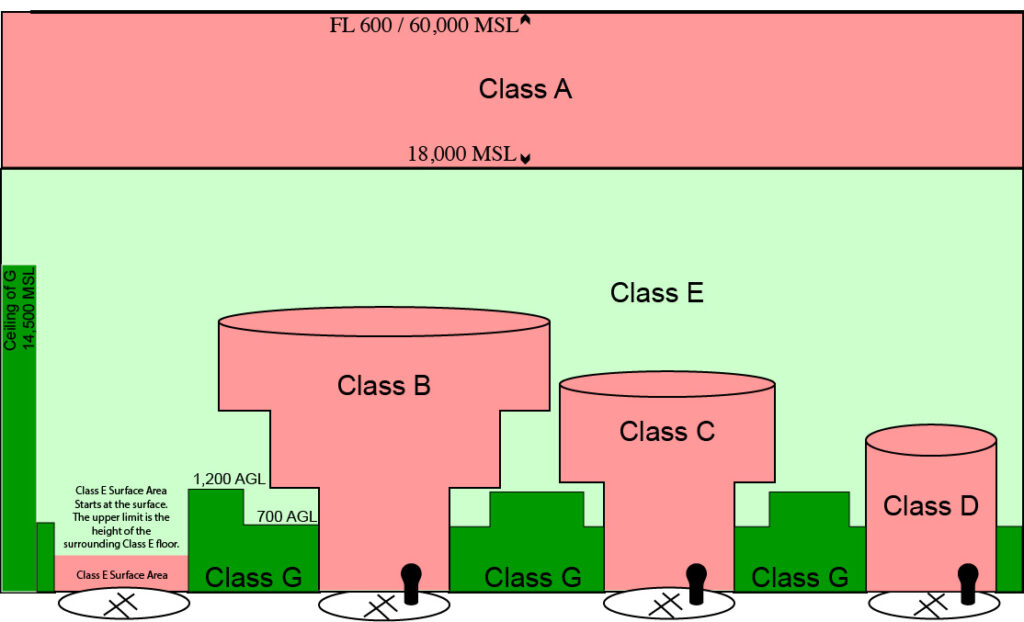
Can Paramotors fly in Class E? Yes, we can fly in Class E airspace without permission. There is the exception of surface areas but we’ll go over that later. Almost any time you are higher than 700′ AGL or 1200′ AGL you are likely to be in Class E airspace.
In Class E, can we fly up next to the clouds? No. When you fly in Class E, you must remain 500 ft below, 1000 ft above, and 2000 feet horizontal of clouds AND must have 3 miles of visibility. If you are above 10,000 MSL, these minimums are increased to 1000 ft below, 1000 ft above, and 1 statute mile horizontal of clouds AND must have 5 miles of visibility.
Is Class E controlled airspace? Yes. Instrument aircraft flying in Class E are controlled by ATC (Air Traffic Control). Ultralights and other non-instrument aircraft flying by visual reference (VFR) are not required to be in contact with ATC. Class E is controlled airspace for IFR traffic. It’s important to understand that YES we can fly there without permission, BUT you need to know WHERE you might encounter other traffic.
Where does Class E Start?
The two most common altitudes where Class E starts are 700′ AGL or 1200′ AGL. Sometimes Class E starts at the surface (depicted on the sectional with a dashed magenta line). We will cover Class E Surface Areas in the next lesson.
On the sectional, you can look for the following:
- Thick Magenta Gradient – On the SOFT SIDE of the line, Class E starts at 700′ AGL. On the HARD SIDE of the line, Class E starts at 1200′ AGL.
- Thick Blue Gradient – On the SOFT SIDE of the line, Class E starts at 1200′ AGL. On the HARD SIDE of the line, Class E starts at 14,500 MSL. These are rare but can be found in some places out west.
- Dashed Magenta Line – This indicates Class E Surface Area. We can’t fly here without permission. See the next lesson for more details.
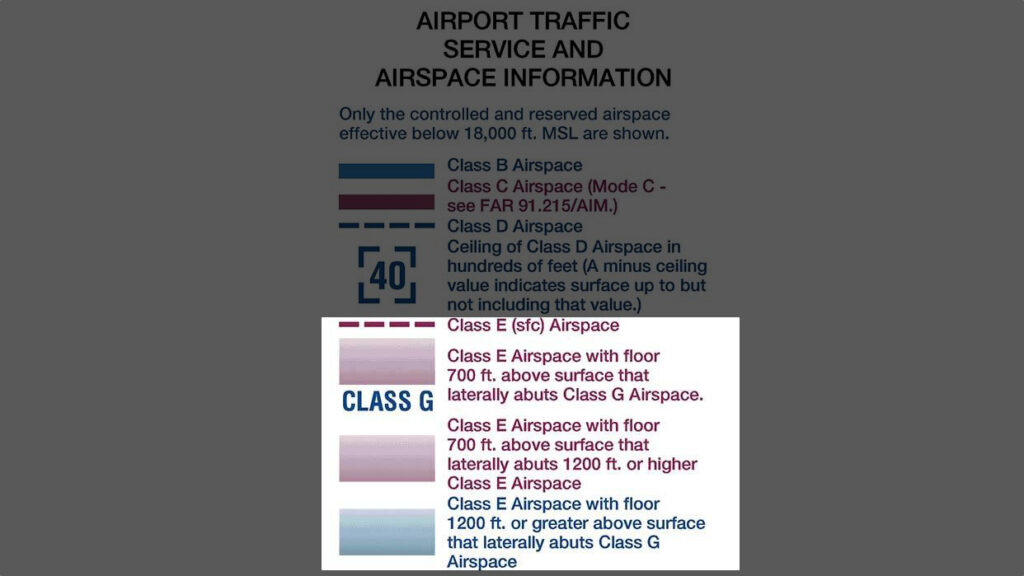
How do we know when Class E starts at 700′ AGL vs 1200′ AGL?
On the sectional, you’ll see a thick magenta line that has a gradient (a soft side and a hard side). Everything on the SOFT SIDE of the magenta gradient is where Class E drops down to 700′ AGL. Everything on the HARD SIDE of the magenta gradient is where Class E starts at 1200′ AGL. The image below shows how it looks on a sectional chart. The white arrow is pointing to the magenta gradient line.
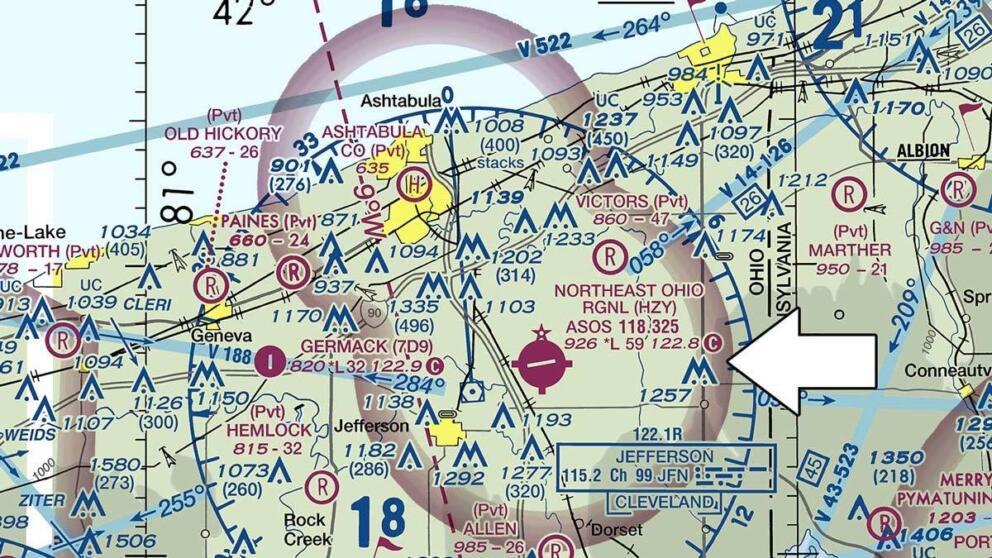
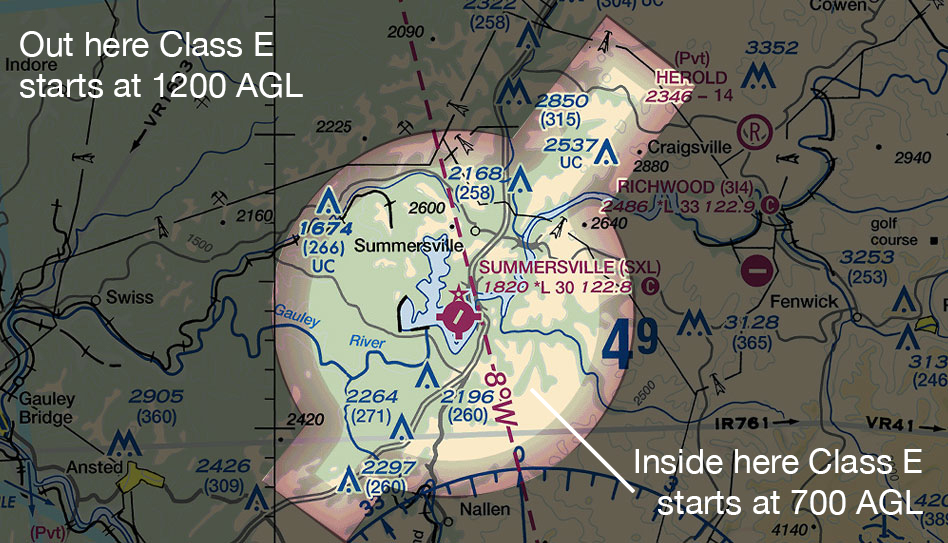
Class E Transition Area
The E airspace on the SOFT SIDE of the magenta gradient is called Class E Transition Area. These areas usually surround airports.
Class E Transition Areas can be big. Sometimes giant areas around multiple airports will all get clustered into a Class E Transition Area and it will look like the image below. Inside the transition area, E starts at 700′ AGL, and outside (darkened to illustrate better) E starts at 1200′ AGL.
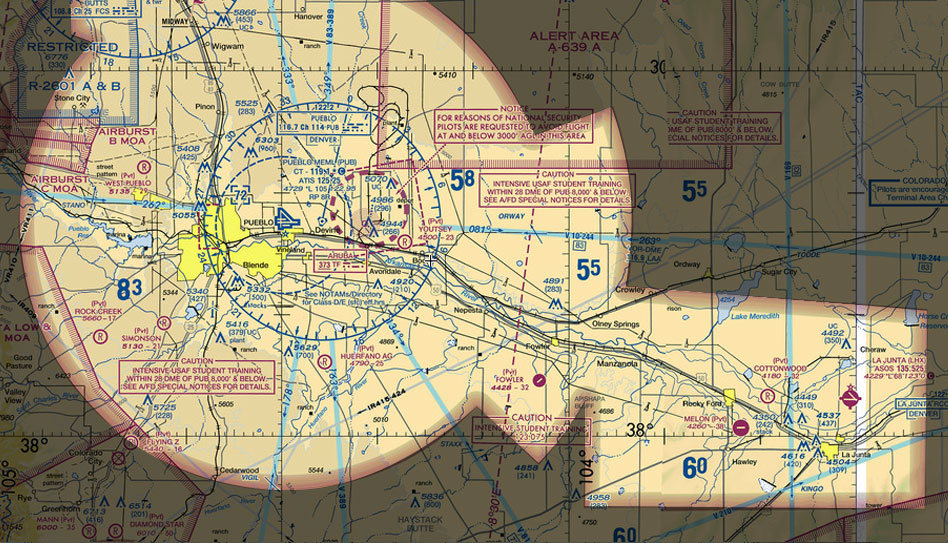
Class E Enroute Airspace
The area on the HARD SIDE of the magenta gradient line is called Class E Enroute Airspace. Class E starts at 1200′ AGL in these areas.
What about the blue gradient line? It’s rare to see the blue gradient but it can be seen out West. The SOFT SIDE of the blue gradient indicates where Class E starts at 1200′ AGL and the HARD SIDE indicates where Class E starts at 14,500 MSL (note this is MSL and not AGL).
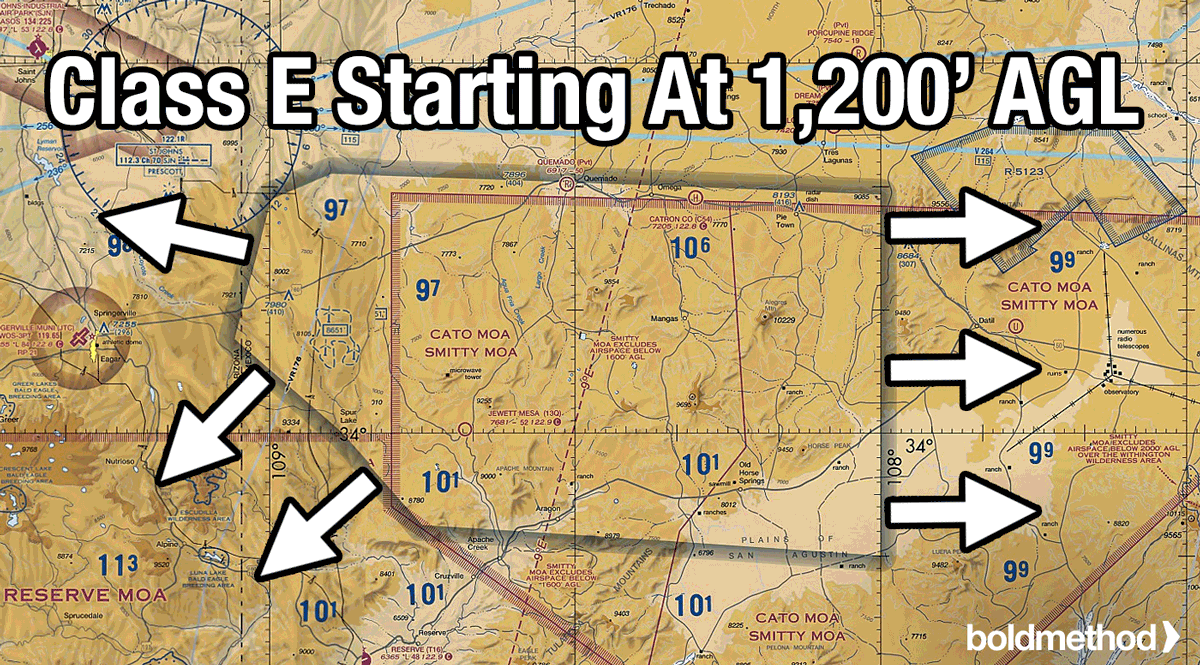
Here is another example where you can see the blue gradient.
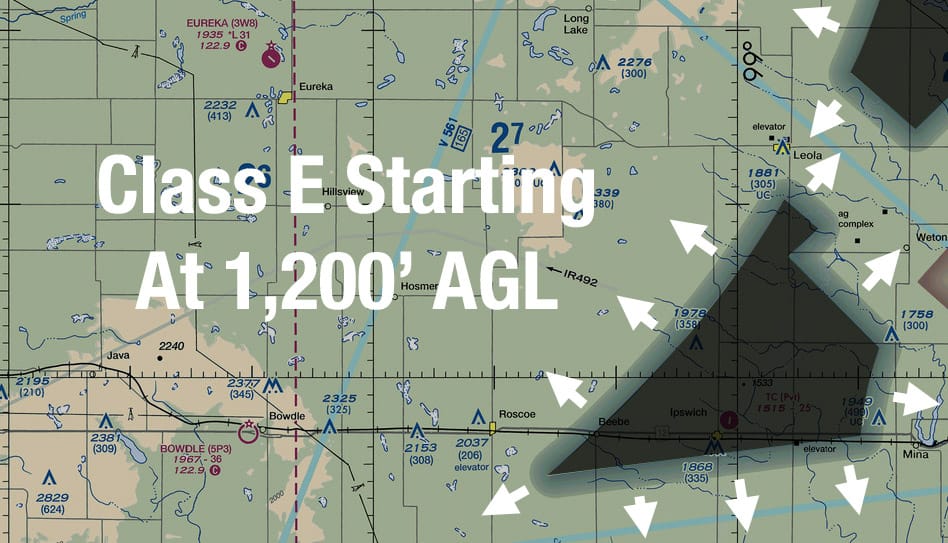
Victor Airways
What are Victor Airways? Think of them as highways in the sky. They extend from 1,200′ AGL up to, but not including, 18,000 ft MSL (FL180).
Can we see them on the sectional chart? Yes, they are visible as light blue solid lines with a number indicating the name/number of the Victor Airway. The basic width of a Victor Airway is at least 4 NM on each side of the centerline (8 NM total width).
Why do they matter to Paramotor pilots? They matter because we are slow and we are hard to see. It’s like crossing a busy road/highway on a skateboard. There are so many other safe places to ride a skateboard, there is NO NEED to go ride it on the highway. Flying a paramotor above 1200 ft AGL in the vicinity of a Victor Airway or along the path of one is simply unwise and asking for trouble. Yes, we can legally do it, but why would you want to?
The black arrow in the image below is pointing to a Victor Airway (V 200).
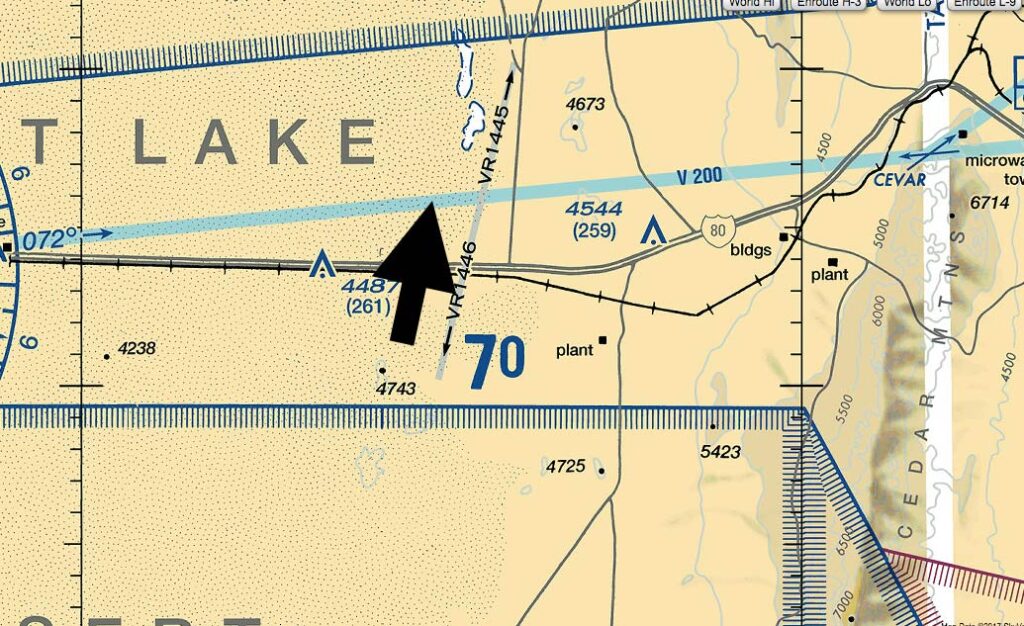
Summary
Class E airspace is EVERYWHERE. It’s like the filler airspace around all the other airspace. There are weather minimums and certain distances we need to maintain from the clouds. As paramotor pilots, one of the most important things we need to know about Class E airspace is that we can’t get close to the clouds. To get close to the clouds, you need to be in G airspace and below 1200 AGL.
